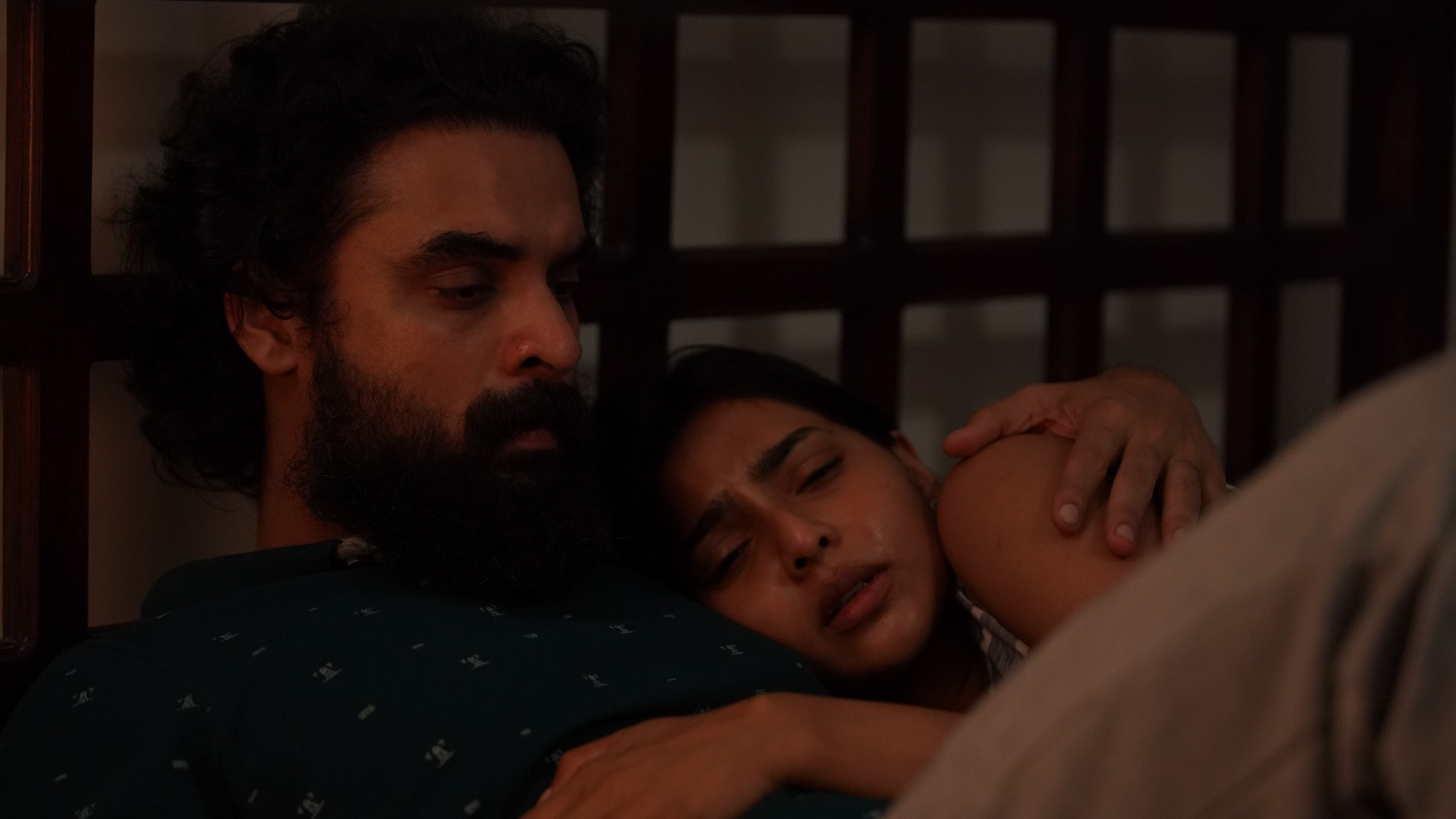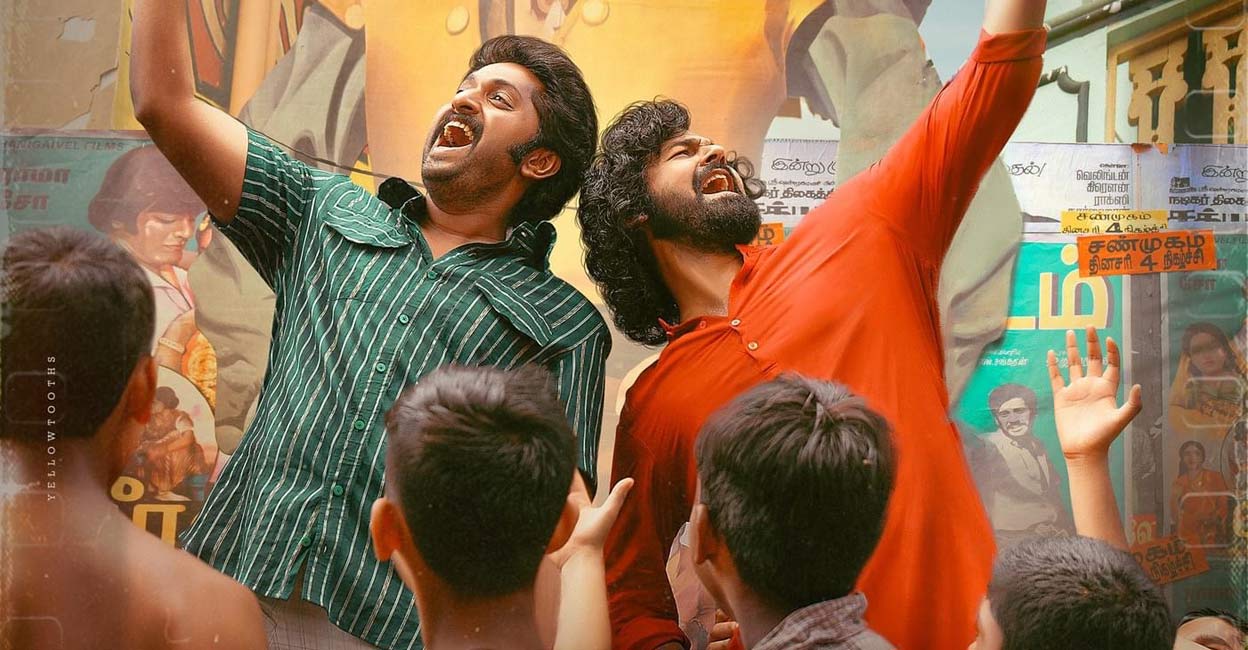In the latter half of the 2010s, the Malayalam cinema industry has focused a grave deal in trying to present the complex psyches of human beings and shed light on why we make certain decisions, problematic or not, and how they affect the psyche of others. These films emphasise on stories that are relatively more character-driven and, while not grand in scale or epic in plot, show everyday problems and unique situations people find themselves in. They act as outlets of anger, pain, sorrow, as well as happiness and relief for individuals who relate with similar complicated mindsets while also presenting character studies of grounded individuals who cannot be defined in black and white. Subsequently, these films offer commentary on man’s selfish behaviours, greed, ignorance, etc., but they also hope for a better tomorrow. Kaanekkaane (2021) revolves around and explores similar grounds. The new OTT release marks the second cinematic venture of scriptwriters Bobby-Sanju Prakash and director Manu Ashokan as well as the popular Mayanadhi (2017) duo Tovino Thomas and Aishwarya Lekshmi.
Kaanekkaane follows Paul Mathan as he seeks justice for the death of his daughter and subsequent revelations he is witness to through his personal investigation of the same. The film presents deep character studies of Paul and Allen as they transcend the typical tropes of good and evil.
Kaanekkaane follows Paul Mathan as he seeks justice for the death of his daughter and subsequent revelations he is witness to through his personal investigation of the same. The film presents deep character studies of Paul and Allen as they transcend the typical tropes of good and evil. Oftentimes, audiences are streamlined to recognise certain characters in films as heroes and beacons of hope fighting against the forces of evil. But in real life, this is almost never the case as any human is a subject of the conditions they are put in and is never completely right or wrong. Audiences initially support the character of Paul, as it is his trauma and mental solitude we are introduced to first. We have no knowledge of the emotional turmoil Tovino’s character is in but as his disingenuous past is revealed, audiences subconsciously label him as a murderer, inhumane, and a fraud.
Also read: Mothers In Malayalam Cinema: From Ideal Care Givers To Individuals With Boundaries
From the very beginning of Kaanekkaane, Suraj Venjaramoodu’s magnetic performance makes audiences aware that he is a man in pain. A sense of ambiguity is present from the opening of the film as character interactions seem vague without exposition. A plethora of possible character bonds race through our heads. For instance, we initially believe Paul to be Sneha’s father as she calls him ‘Pappa,’ which proves to be false as we see Paul later enquire whether the name of the lady was Sneha. Consequently, the director inhibits any sense of predictability in character bonds as Paul is revealed to be neither the father of Sneha nor Allen but is the latter’s father-in-law who has come to visit his grandson, Kuttu. There is a constant sense of discomfort in the air. Paul and Sneha struggle to converse, and so does Allen once he arrives. Even as the idea of ‘family’ holds the characters together, there is no natural co-existence between them as secrets plague the minds of these characters. These secrets are only revealed in Paul’s pursuit of the truth.

We see Paul’s resilience in trying to uncover the mysterious death of his daughter and thereby punish the wrongdoers for what they have done. He condemns the driver who hit his daughter, not for the action of hitting but then leaving her to die alone in the darkness. It is the feeling of solitude that his daughter felt as her life withered away from her body that tortures Paul, one he himself faces throughout Kaanekkaane. Grief-stricken and with a sense of betrayal at realising that his son-in-law chose to abandon his dying daughter after her accident, a vengeful Paul seeks redemption by taking away Allen’s son. He refuses to pay heed to Allen’s plea that he did, in fact, return to save his wife and that he wanted to confess to his father-in-law but never could out of guilt. Paul tries to manipulate his grandson and forcefully take him away from his parents without his consent, but this ultimately ends up with his grandson disdaining him. Paul, initially introduced to audiences as a character to empathize with, becomes naive and self-centered and demands justice at the expense of hurting others. He gradually becomes less empathetic while the polar arc happens with Allen as he gets more character development as the plot of Kaanekkaane progresses.

With the “every man for himself” attitude set in motion, Allen also attempts to convince his son to stay and shields him from his maternal grandfather. He realises that his father-in-law wishes for vengeance more than justice and that he would not stop at anything to attain it. In his scramble for his son’s retention, he completely alienates Sneha. Sneha has an emotional breakdown, and her father, believing Paul to be the source of pain, confronts him and threatens to resort to violence if necessary. We see characters, all gentle and sorted previously, lose all their bearing on diplomatic discussions and take extreme measures to protect what they love. In their stories, they are the protagonists, and anyone causing harm to them or their loved ones is the villain. Empathy is drowned in a river of emotions, and all that’s left is a scramble for survival. We see three fathers willing to sacrifice the bonds they have created through marriage in order for their loved ones.
Kaanekkaane refrains from containing itself to a single genre and repeatedly subverts the audience’s expectation for where the plot could go. A seasoned audience would attempt to construct where the story leads but is overtly surprised at developments. While this unpredictability isn’t complimentary for the film as a whole, the script is tight in preventing too many predictable events with a climax that seemed forced but necessary for the plot. The ambiguous plot appears to be a parallel for the ambiguity of the human mind the film comments on. Individuals who value family and social bonds for peaceful co-existence are, towards the end, shown to be individualistic. While labelling them selfish seems too far-fetched, it certainly shows a dark side of human existence which could portray anyone as a villain no matter how righteous their conscience is.
Also read: Film Review: Sara’s — A Refreshing Take On The Deification Of Motherhood
Separation and being distant seems to be a recurring theme in the film. Paul and Allen are both distant from Sherin. Allen and Sneha seem to be dysfunctional and distant from one another. Paul shows the pain of being distant from Kuttu for over a year. The film’s first song, Paalnilavin Poykayil, brings this out beautifully with sequences paralleling the past and the present and the change in the family’s emotional state. This is made most evident in the case of Paul as once a happy family man who takes a picture with his family ends up being the photographer of the family his son-in-law becomes a part of.

Ashokan brings out the flux of emotions his three main characters go through with numerous close-up shots. It is used so frequently that audiences feel a sense of claustrophobia as the story progresses. We feel suffocated when we see Paul collapse during his interaction with Allen at the lodge he stays at. Psychological tension is created between them through unspoken words, but through gestures and eye movements, messages are conveyed almost telepathically. Even as we witness Allen to be a caring individual with his insecurity and guilt laid out to Paul, Paul remains firm on his resolve to take away Kuttu. It is only towards the climax when roles are reversed, and Paul is placed in a similar situation to what Allen was in, that Paul realises how instantaneous decisions may become clouded with selfish emotions. Paul sees Sneha bleeding profusely, possibly on the verge of death, and remembers how his daughter was in the same situation a year ago, but he hesitates to help. We see Paul becoming a hypocrite when he too shows the same inhumane part of Allen in abandoning his wife in his initial reluctance to help Sneha. But he realises his selfish needs are pointless in his rejection by Kuttu and saves Sneha’s life.
Sneha could have lost her life had Paul been a bit more late in taking action similar to Allen being late to save Sherin. Both Allen and Paul seem to have had the same reaction time but are only different in that Allen took longer to reach Sherin as he was in a moving vehicle travelling more quickly further away from the site of the accident and therefore could not save her. Sneha could have lost her life as well and was lucky to escape because of how close Paul was. Paul could have easily been the very same murderous inhumane fraud that audiences initially believed Allen to be. Martin Mcdonagh’s Three Billboards Outside Ebbing, Missouri (2018) also brings forth this idea of characters being debased, redeemable and corruptible, at the same time through his characters of Mildred Hayes and Jason Dixon. While Kaanekkaane’s series of events coming full circle does seem a bit forced with respect to the plot, it was necessary for showing the complexities of the human mind and how one is susceptible to being corrupt almost as much as being righteous. Thus proving how the grey human mind isn’t actually programmed to be good or bad inertly and how it is all a construct of circumstances.
:no_upscale()/cdn.vox-cdn.com/uploads/chorus_image/image/58380967/billboards1.0.jpg)
Contrary to mainstream stock characters of good and bad, Kaanekkaane focuses on developing characters who go against their moral principles and let selfish behaviors take charge and make mistakes. It is a more grounded and realistic take on human existence and one which can resonate with any human being.
Recognising that human beings are cognitive creatures who are in a constant state of development and that their understanding of goodness and badness is constantly challenged and rewired is a more accurate depiction of their existence. This state of moral flux that the human mind is constantly in is something mainstream cinema often avoids for the ease of creating two-dimensional conflict resolution situations in cinema. Contrary to mainstream stock characters of good and bad, Kaanekkaane focuses on developing characters who go against their moral principles and let selfish behaviors take charge and make mistakes. It is a more grounded and realistic take on human existence and one which can resonate with any human being.
Krishnanunni P is currently pursuing his Master’s degree in Film and Literature from the University of York. He is an ardent fan of Football and Dance but also prefers to spend time immersed in Literature, Philosophy and Cinema. He is on a personal pilgrimage to tell the artistic stories of Malayalam Cinema. You can find him on Instagram and Twitter.
Featured image source: indianexpress.com




